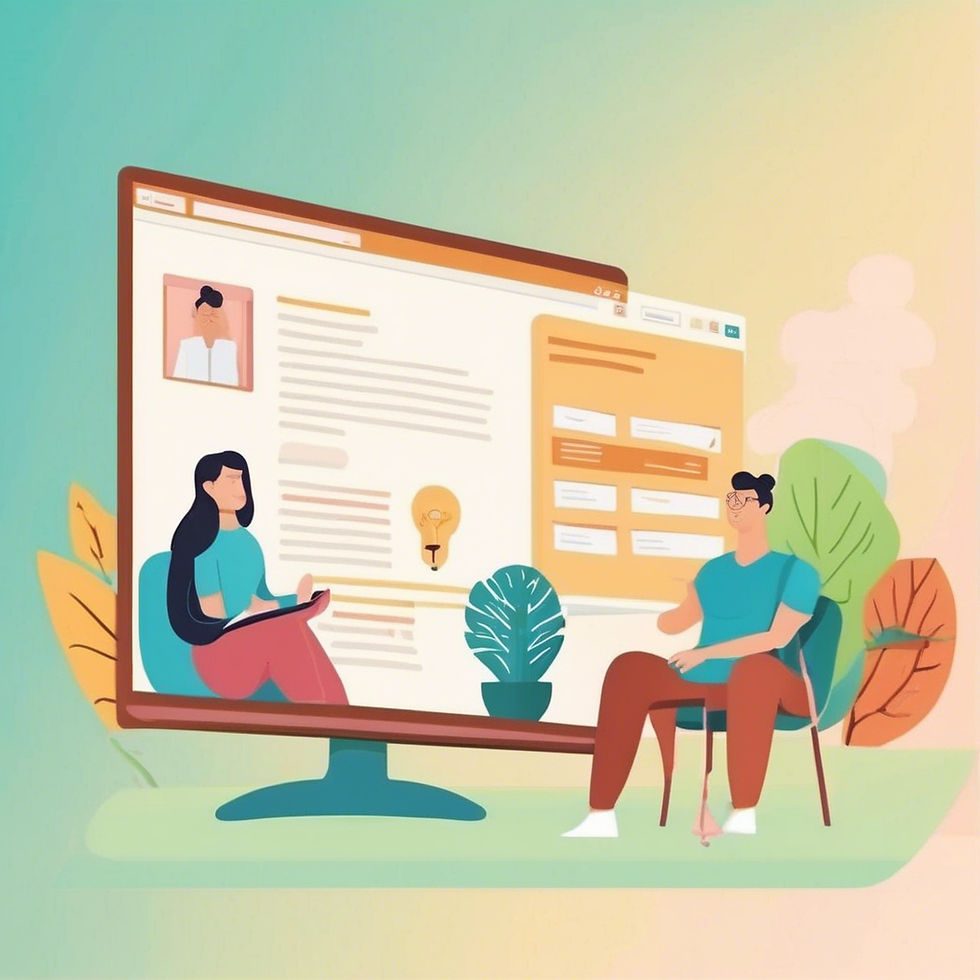Choosing the Right Path for your Private Practice Website: DIY or Professional Designer?
- Laura Spreitzer

- Jan 8
- 4 min read
Updated: May 30
In today's digital world, having a website is crucial for any private practice. Whether you're starting fresh or looking to update your existing site, you might be wondering: Should you build your website yourself or hire a professional? Let's explore both options to help you make a smart decision that fits your practice’s needs and goals.
Understanding DIY Website Building
Creating your own website can be an appealing option for many therapists. The possibility of saving money while maintaining control over the design and content is often a strong motivator.
One major benefit of a DIY website is its cost-effectiveness. Popular tools like WordPress, Wix, and Squarespace allow you to create professional-looking websites for as little as £10 to £30 per month. This is significantly lower than hiring a designer, which can cost anywhere from £500 to £5,000. With some patience and basic tech skills, you can craft a website that reflects your individual vision.
However, this pathway comes with its own challenges. While DIY platforms have made web design accessible, they may not offer the depth of customisation that a professional can provide. You might end up spending dozens of hours figuring out how to build a website when that time could be better spent focusing on your clients or developing your skills.

The Benefits of Hiring a Professional Designer
On the flip side, hiring a professional designer can ease much of the burden involved in assembling your website. A skilled designer can craft a website that is visually appealing and user-friendly, optimising it for search engines. This can enhance your online visibility for important search terms like “therapy for depression” and “counselling services.”
Another key advantage of hiring a professional is the substantial time you save. Developing a website can be a complex task, especially if you are not familiar with design principles or technical requirements. A designer can create a polished site while managing essential aspects like mobile responsiveness.
Nevertheless, hiring a designer has its downsides. The biggest consideration is cost. While it may yield a superior product, hiring a designer often involves spending more than you might have anticipated. You might find yourself choosing between various pricing packages that differ in the services offered. Additionally, you might have limited input during the design process, which could lead to a final result that does not fully represent your vision.
Weighing the Pros and Cons
When faced with the decision between DIY and hiring a professional designer, it is essential to consider both sides carefully. Here are major factors to weigh in:
DIY Advantages
Cost-effective: Generally much cheaper than hiring a designer.
Creative freedom: You have full control over every aspect of the design and content.
Skill development: Gaining web design skills can be beneficial for future projects.
DIY Challenges
Time investment: Learning to build a site can take significant time, often more than expected.
Knowledge gaps: Lack of expertise in areas like SEO may hinder your site’s effectiveness.
Frustration: Technical issues can lead to a sense of overwhelm and disappointment.
Professional Designer Advantages
Expert insight: Designers know the best practices in design and SEO to help your site stand out.
More focus on your practice: You can spend time enhancing your services while a designer handles the details.
Customised design: A professional provides tailored solutions to meet your branding needs.
Professional Designer Challenges
Higher costs: Services vary, but investing in a designer can be a large financial commitment.
Limited engagement: You might have less say in the design process, which can be frustrating.
Timeline dependency: Projects can take longer than anticipated based on designer schedules.
Assessing What’s Best for Your Practice
Ultimately, the choice between developing a DIY website and hiring a professional depends on your unique needs and circumstances. Here are several key questions to reflect on:
What is your budget? Understand your financial limits for your website project.
How much time can you invest? Evaluate how much you can realistically spend on building a site versus caring for clients.
What is your comfort level with technology? Consider your readiness to learn new tools and manage design software.
What are your long-term plans? Think about how you want your website to evolve as your practice grows.
Final Thoughts
Deciding between building a DIY website and hiring a professional designer is a critical step that influences your therapy practice’s online identity. By carefully considering the pros and cons of each option alongside your specific needs, you can choose a path that aligns with your goals.
Remember, your website should be a true reflection of your private practice and serve as a key tool to connect with those seeking therapy. Taking the time to make a thoughtful decision will ensure that your website meets the needs of both you and your clients.


Your Therapy Website specialises in crafting unique, affordable websites tailored for therapists and counsellors. Whether you have an existing Wix website that needs optimisation or you're starting from scratch with a brand-new one, I’m here to help. With prices starting at just £395, we can work together to find the perfect solution for your needs. Get in touch to discuss how I can support you.
.png)



